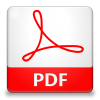Cultural Advisory was a curriculum I designed from 2011-2013 while working for Denver Public Schools. We found that all of our students were falling behind in reading and as a result, I was tasked with creating a curriculum that would allow our students (in the Middle and High School grades) to engage with reading and writing. At the same time, our school was pushing for integrating the work of Alfred Tatum (both “Teaching Reading” and “Reading for their Life”) which was a significant influence on the curriculum I designed.
The Curriculum
As a Lead Teacher at the Denver Center for 21st Century Learning, I was tasked with a number of responsibilities. Those included being the Technology Director, Math/Science Teacher, STEM Program Developer, Webmaster, Google Apps Administrator, and finally, Curriculum Developer. As all of those tasks influenced my decisions on a daily basis, they all influenced how I interacted with my students to create and modify the Cultural Advisory Curriculum.
Introduction:
Students at DC-21 come from a diverse set of backgrounds. By embracing the cultures that our students bring, we can strengthen our school culture and promote positive behavior and academic achievement. The Cultural Advisory Curriculum is intended to purposefully create strong relationships between students and members of the faculty while supporting a variety of cultural beliefs. As the curriculum progresses, the relationships formed at the beginning of the curriculum will be pivotal in providing the foundation for addressing cultural dialogue and facilitate effective cultural instruction.
Rationale:
This curriculum was entirely designed with DC-21 students in mind (50% African American, 45% Hispanic, 3% Caucasian, 2% Native American, with a 30% Special Education population). At DC-21 our students suffer significantly because of strife in their community and their personal lives. Our teachers have seen students who have spent the past few years living on the street because they are homeless, or are being abused, both physically and emotionally, when they return home.
The biggest equalizing force we have at DC-21 is the similarities between the upbringing and experiences of all of our students.
To add another layer of complication in the process of integrating our students, DC-21 has a greater than 80% free and reduced lunch. Our students are both ethnically and socio-economically diverse.
Our culture inspired us to create this curriculum that specifically teaches tolerance and the respect for all people, regardless of race, sex, or nationality.
Unfortunately, as we were exploring the curriculums that are commercially available, we found no curricula that would reach our specific population. Instead of purchasing a curriculum and trying to make it fit, we designed our own curriculum to tie together best practice instruction from multiple sources (including: ID, Tolerance, and the Anti-Bullying Framework).
This curriculum is designed to support our efforts to culturally integrate our students, while developing their reading and writing abilities (with the focus of increasing our MAP scores from their current 5th grade level).
Overview:
Each lesson is designed to take experienced teachers 1 to 2 advisory periods (approximately 25 minutes each). This can easily be adjusted to include additional curriculum material as the semester progresses based upon student need. The first two weeks start with an introduction to the materials and methods taught throughout the course, as well as setting a common framework upon which the class to grow. These first two weeks will be the most difficult to teach, and a firm foundation of mutual respect and tolerance is fundamental to the success of this unit.
Immediately following the first two weeks of instruction, your class will begin to explore culturally relevant writing. Students will be asked to draw parallels between influential works, as well as explore the history of our country and the diverse cultures that exist within it. This curriculum is designed as 45 distinct lessons (approximately 9 weeks of direct instruction) with additional supplemental lessons that provide additional emphasis in reading, writing, and cross discipline instruction (in music and art specifically). As we progress through the first year of teaching this curriculum as an entire school, we will overhaul the lessons to make them more appropriate to our culture and climate.
Resources:
This curriculum was designed using several sources. Those sources are:
- The Anti-Defamation League Anti-Bias Workbook
- The Scholastic ID Curriculum
- Alfred Tatum’s: Teaching Reading to Black Adolescent Males
- Alfred Tatum’s: Reading for their Life
- The Lessons provided by Tolerance.org
- The 4Aspects Workbook
- The Anti-Bullying Framework
Further Directions:
As this curriculum was being designed, we wanted to ensure that every student at DC-21 has exposure to this material and that it is engaging for our entire population. As such, we will be giving this framework as a whole school initiative during the second semester of the 2011-2012 school-year. As we progress, our school will need additional curricula that are designed to reinforce these themes and ideas.
The current long-term plan is to offer this curriculum (expanded to be one year long) to our incoming Freshmen every year. Our Sophomores and Juniors will take a second Leadership Advisory course, where they build upon the strategies from this curriculum to specifically examine the actions, qualities, and characteristics of great leaders.
Our Seniors class will be placed in a Professionalism Institute. In this institute, students will read books regarding professionalism, and will focus on post-secondary readiness from a foundation in analyzing culturally stereotypes regarding being professional.
Downloads
 You can access a PDF Copy of the Curriculum by Clicking on the PDF Link to the Left.
You can access a PDF Copy of the Curriculum by Clicking on the PDF Link to the Left.

